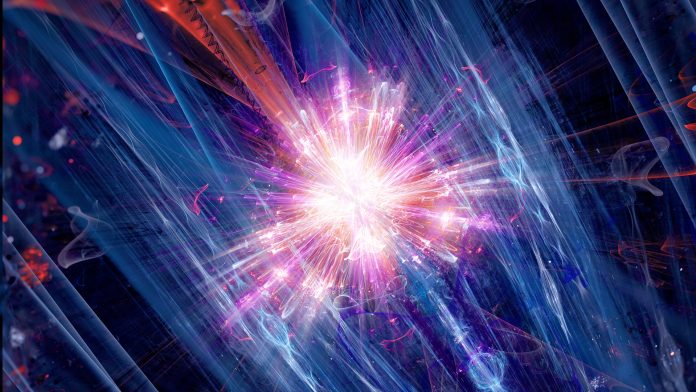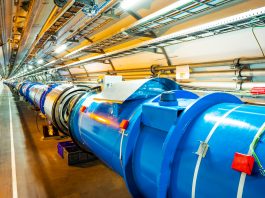Towards a ‘new physics’: calculations made by scientists at the University of Bonn support the hypothesis that the Standard Model of physics should be extended.
In recent years, researchers have increased the number of experimental observations that challenge the widely accepted theory of the Standard Model of particle physics. New research conducted by scientists at the University of Bonn has provided new findings that support the existence of a ‘new physics.’
This novel evidence has been published in the journal Physics Letters B.
The Standard Model
The Standard Model of particle physics illustrates the building blocks that compose the world. As well as this, it explains the forces that act between the elementary particles in the Universe and enables our understanding of many physical phenomena.
“However, there are also questions that this theory cannot answer,” said Dr Chien-Yeah Seng, a postdoctoral researcher at the Helmholtz Institute for Radiation and Nuclear Physics at the University of Bonn. “For example, most researchers assume that 95%of our Universe is made up of dark matter and dark energy, which we cannot detect directly with our measuring instruments. But the existence of these mysterious components cannot be deduced from the Standard Model.”
Therefore, a large part of the physics community assumes that the Standard Model is not the ultimate answer but may need to be improved or even fundamentally altered. Now, an ever-growing number of experimental findings support this theory, such as those regarding the decay of the so-called kaons. These particles are a component of cosmic rays emanating from stars and galaxies. They are not stable but decay on average after a few billionths of a second.
Measurement and theory inconsistencies
A parameter of the Standard Model called Vus explains this decay. Its value can be obtained mathematically from measurement data of experiments. However, if this is done for different decay paths of kaons, different findings are acquired for Vus. “This could be an indication of physics beyond the Standard Model,” Seng explained.
However, this is not entirely certain as there are three potential explanations for this inconsistency. First, the measurements in the experiments could be wrong or too inaccurate. Next, the calculation of the relevant decays under the Standard Model may not be precise enough. Thirdly, the Standard Model is incorrect at this point.
“The first explanation is now considered unlikely,” emphasised Professor Dr Ulf Meißner of the Helmholtz Institute. “For one thing, it is now possible to determine Vus experimentally with increasing precision. Second, these measurements have now been repeated many times.”
However, it remains unclear if the calculations of the decays within the framework of the Standard Model are precise enough to extract Vus. This is due to the fact that calculating them is only possible to an approximate degree, and only with the application of very powerful supercomputers. As well as this, even the quickest computers would at present be busy for decades in order to accomplish an adequately high computational accuracy.
“However, we need high accuracy to be sufficiently confident that the discrepancy between the Vus values is indeed indicative of an error in the standard model,” Seng said.
Alongside colleagues, the researcher from Malaysia has now created a technique that can considerably shorten the computing time. “To do that, we broke down the problem – accurately extracting Vus – into many simpler subproblems,” he added. “This made it possible to determine the value of Vus from kaon decays much faster and more accurately than before.”
Further evidence of a ‘new physics’
These new findings conclude that there is inconsistency between the Vus values, thus meaning the evidence for a ‘new physics’ beyond the Standard Model has therefore become stronger.
“We can’t be completely sure yet, though,” concluded Seng. “For that, our calculations have to become a bit more precise. But if our results are confirmed, it would certainly be one of the most important findings in particle physics in recent years.”









